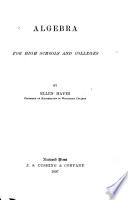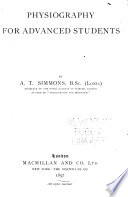 | Elroy McKendree Avery - Physics - 1895 - 616 pages
...it is only 0.23 times as dense. 90. Law of Gravitation. — The mutual attraction between two bodies varies directly as the product of their masses, and inversely as the square of the distance between their centers of mass. For example, doubling this product doubles the attraction... | |
 | Alfred Payson Gage - Physics - 1895 - 668 pages
...Universal Gravitation is as follows : — The attraction between every two bodies of matter in the universe varies directly as the product of their masses, and inversely as the square of the distance between their centroids.* Representing the masses of two bodies by m and m', the distance... | |
 | S. P. Meads - 1896 - 298 pages
...has greater density ? [See Chap. V.] Law of Gravitation. The attraction between any two bodies varies as the product of their masses, and inversely as the square of the distance between their centers of mass. We often speak of the larger body's attracting the smaller,... | |
 | Arthur Thomas Simmons - Geomorphology - 1896 - 362 pages
...enunciated by Newton, which expresses the fact that every mass attracts every other with a force varying as the product of their masses and inversely as the square of the distance between their centres. In addition to this it has been seen that the inertia possessed... | |
 | Le Roy Clark Cooley - Physics - 1897 - 480 pages
...gravitation. d. Newton's universal law of gravitation states that the attraction between any two bodies varies directly as the product of their masses and inversely as the square of the distances between their centers of mass. Let A and B (Fig. 63) represent two bodies, and d the... | |
 | 1897 - 638 pages
...certain class of facts. According to this theory, all material objects are attracted toward each other directly as the product of their masses, and inversely as the square of their distances from each other. But neither Newton nor any of his followers has ever been able to solve... | |
 | Elroy McKendree Avery - Physics - 1897 - 328 pages
...attractive force is called gravitation. 58. Law of Gravitation. — The mutual attraction between two bodies varies directly as the product of their masses, and inversely as the square of the distance between their centers of mass. For example, doubling this product doubles the attraction... | |
 | Elroy McKendree Avery - Physics - 1897 - 344 pages
...attractive force is called gravitation. 58. Law of Gravitation. — The mutual attraction between two bodies varies directly as the product of their masses, and inversely as the square of the distance between their centers of mass. For example, doubling this product doubles the attraction... | |
 | Ellen Hayes - Algebra - 1897 - 244 pages
...is a constant, and therefore a oc bc. "For example, the stress between two gravitating bodies varies as the product of their masses and inversely as the square of the distance between the bodies ; hence, if F represents the stress, or force of attraction, between... | |
 | Arthur Thomas Simmons - Geomorphology - 1897 - 516 pages
...enunciated by Newton, which expresses the fact that every mass attracts every other with a force varying as the product of their masses and inversely as the square of the distance between their centres. In addition to this it has been seen that the inertia possessed... | |
| |